Refund Guaranteed
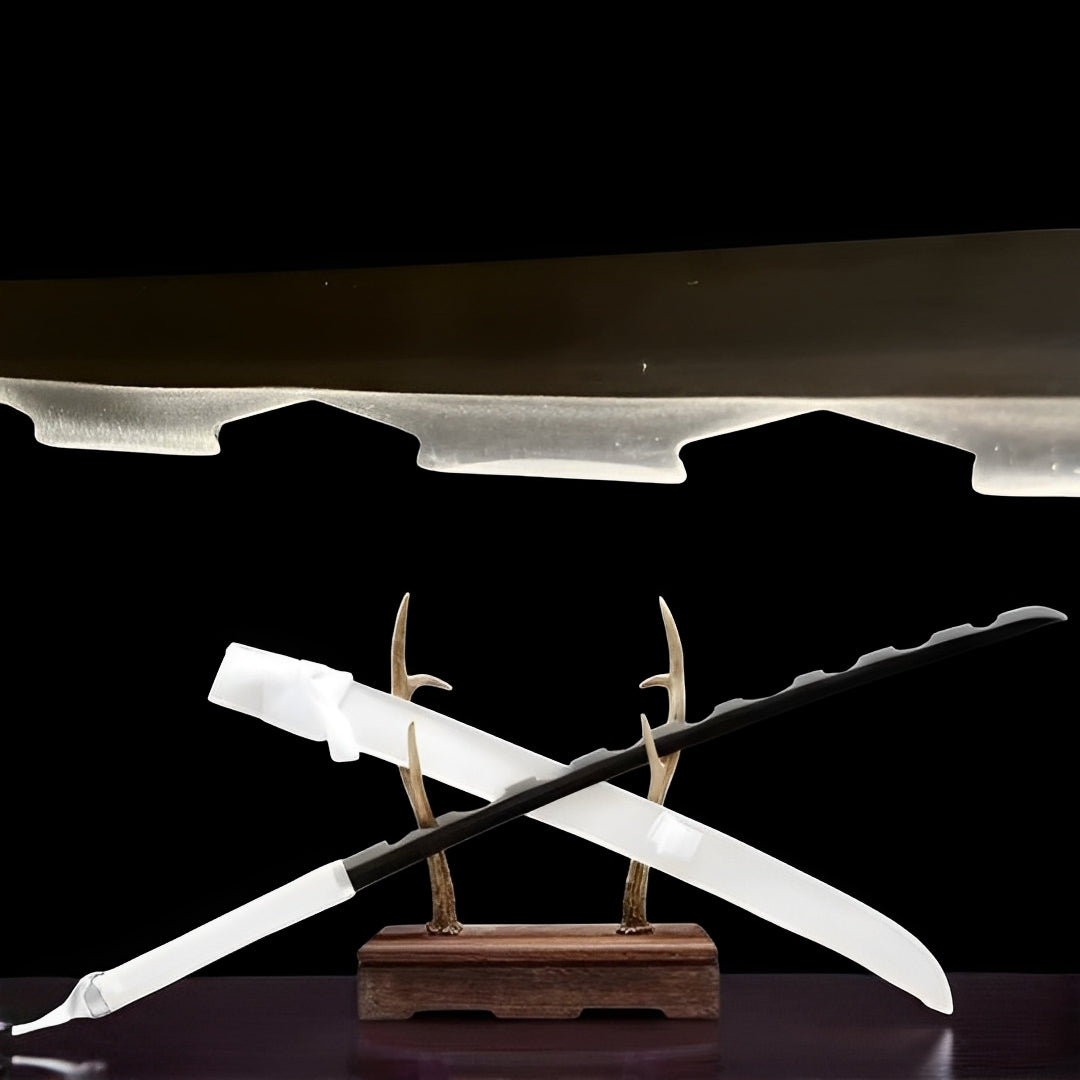
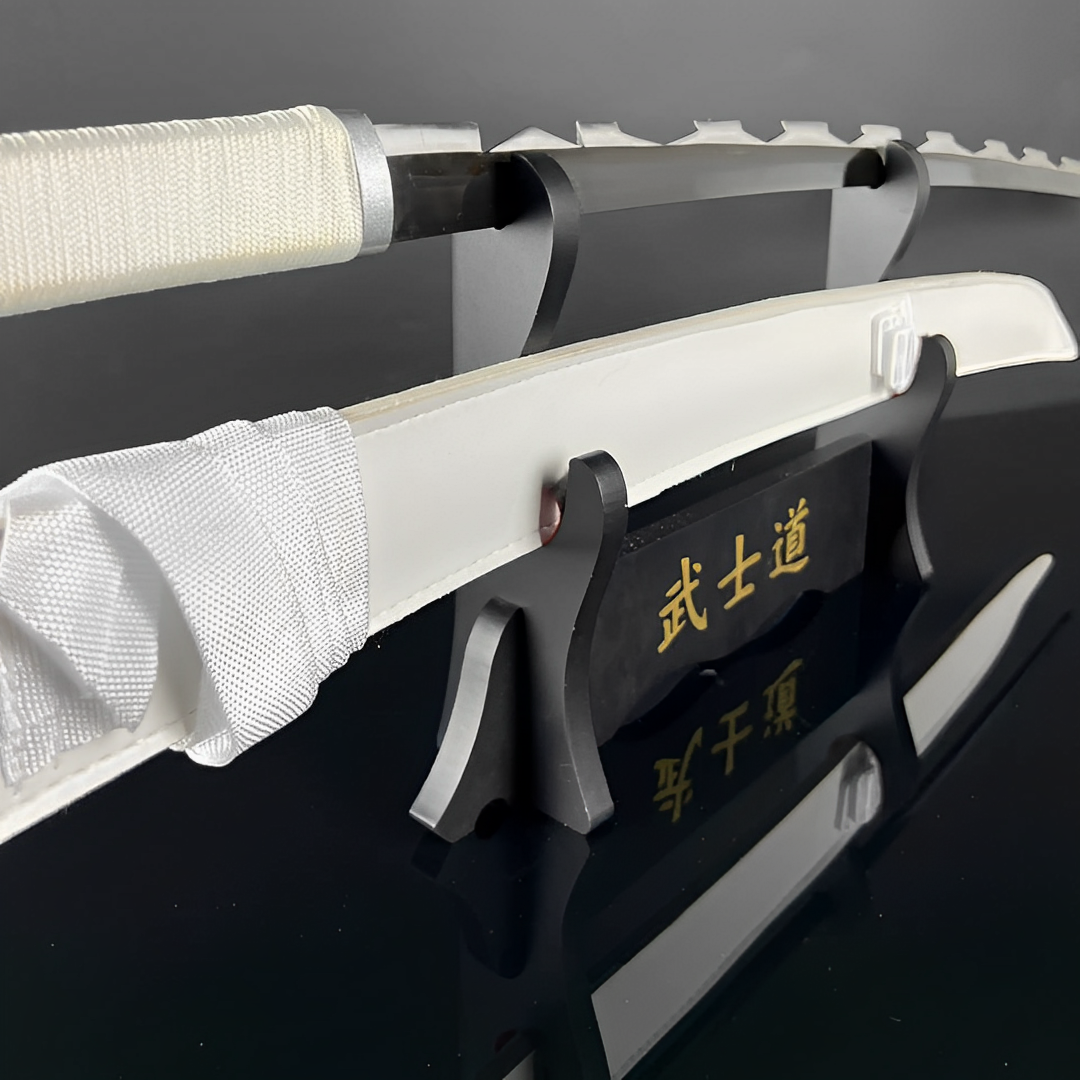
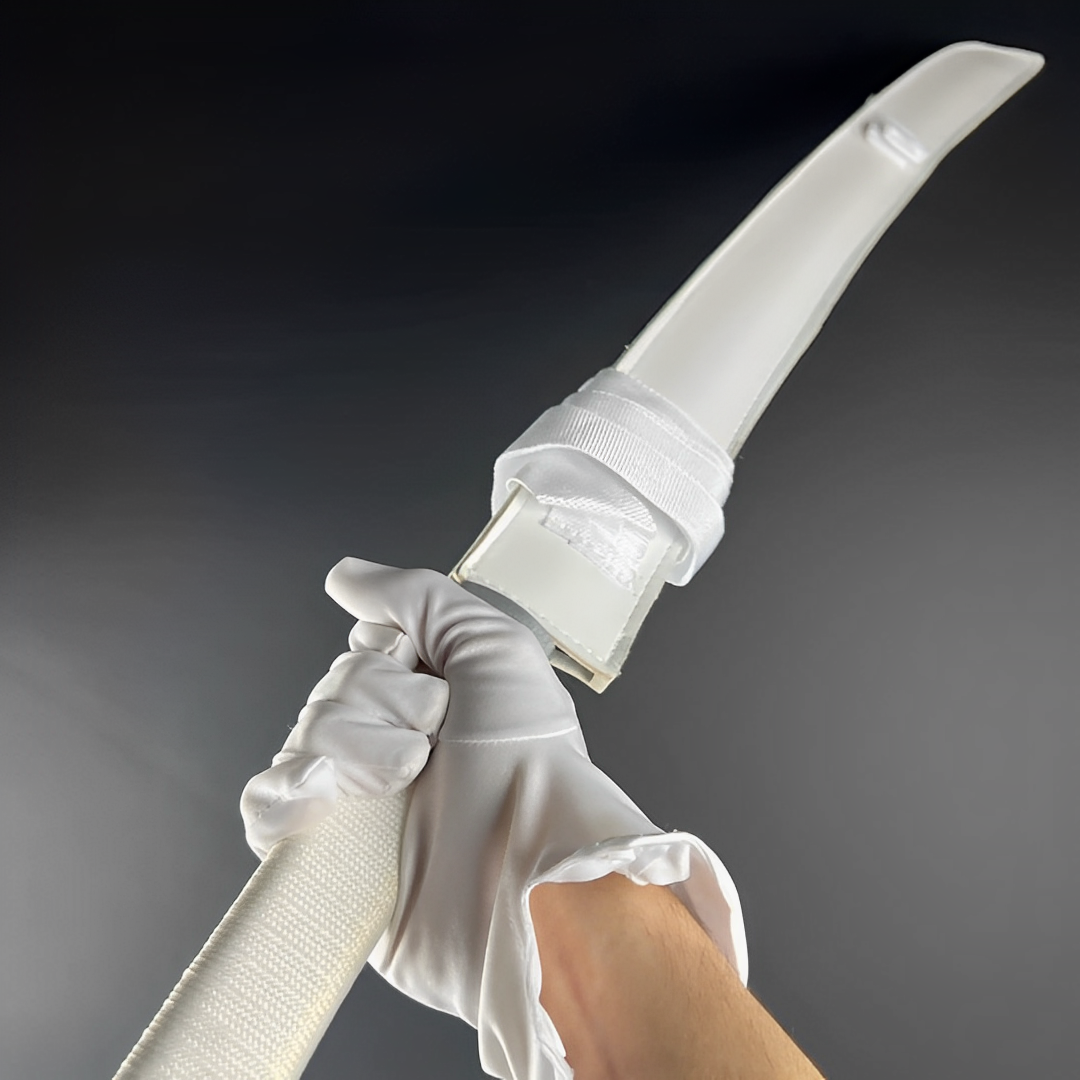
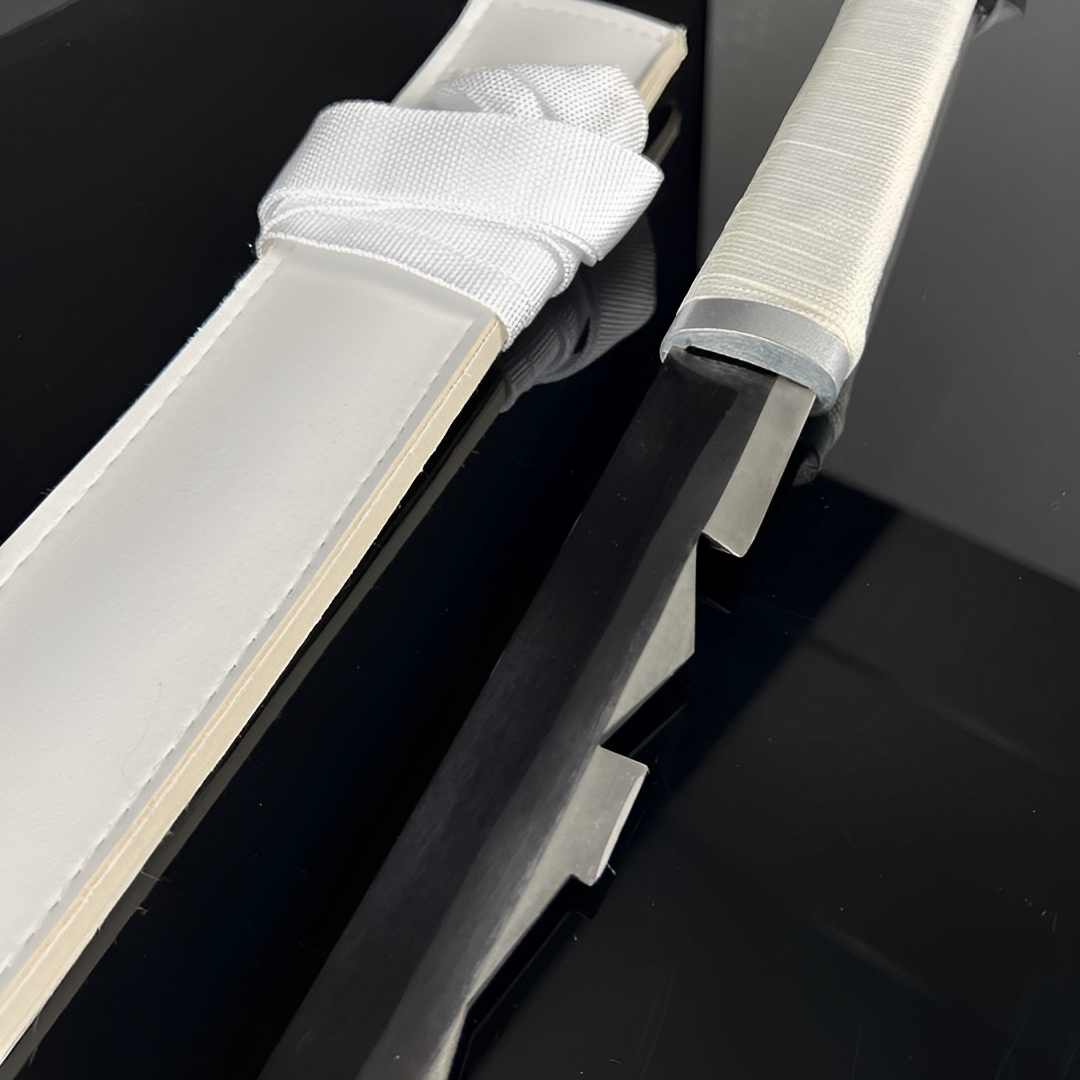
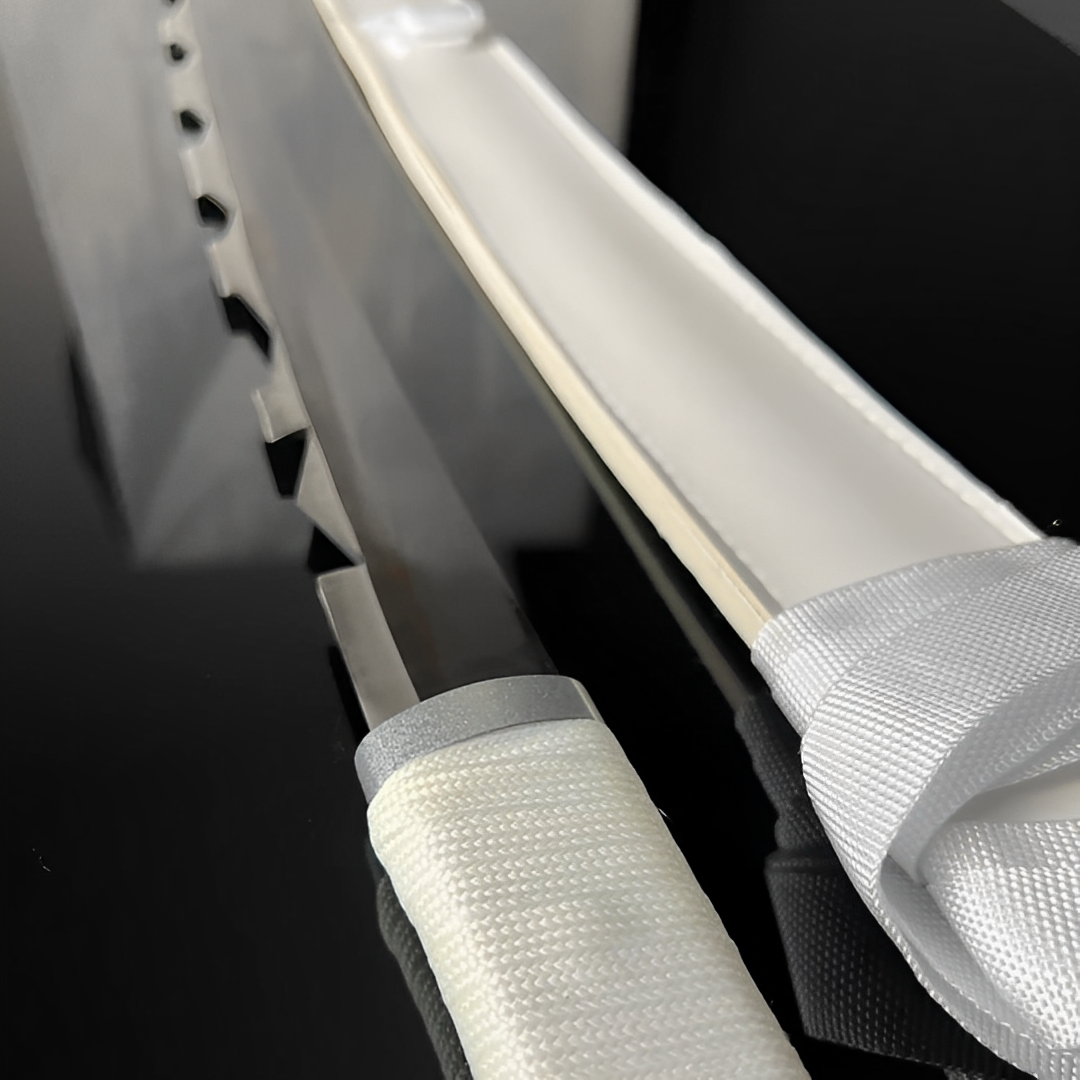

Inosuke Katana (Demon Slayer) - 伊之助
Included with your order



Note: Engraving placement and orientation may vary by blade model (hamon, geometry, and flat area).
Free Shipping over $250
No Bots, No AI
Refund Guaranteed
Free Shipping over $250
No Bots, No AI
Our team is here to help with any questions or concerns.
We’re always happy to assist you — don’t hesitate to reach out.

Inosuke Katana (Demon Slayer) - 伊之助
Specifications
- Full tang in handle
- SHARP
- Handcrafted
- Blade material: 1060 carbon steel
- Cotton Tsuka-ITO
- Leather sheath
- Overall size: 105cm
- Blade size: 72cm
- Blade width: 3.2cm
- Blade thickness: 0.7cm
- Handle size: 30cm
- Includes: Katana and scabbard
Inosuke Katana - Beast Breathing Serrated Chaos
Unleash primal fury with Inosuke's Katana, blades rejecting every sword-keeping rule ever written. This feral Demon Slayer dual-wield defies civilization - deliberately chipped edges transforming smooth steel into saw-toothed savagery, pure white suggesting innocent origins corrupted through mountain wilderness upbringing, paired blades wielded by someone who learned swordsmanship from watching animals fight rather than studying under masters. Not weapons maintained through discipline but tools shaped through chaos, each serrated tooth representing moment Inosuke smashed blades against rocks because "damaged swords cut demons better," asking whether you follow traditions everyone respects or forge your own path through pure stubborn ferocity.
Beast Breathing Wild Origins
Inosuke Hashibira revolutionized Demon Slayer by being Corps member who literally never received formal training. Raised by boars in mountains after mother abandoned him, he developed Beast Breathing through observing animal combat, creating self-taught style emphasizing instinct over technique, aggression over defense, chaos over control. His beast warrior blades embody that philosophy - no elegant technique, no philosophical depth, just raw effectiveness proven through surviving when formal training would've gotten him killed.
The dual-wielding specifically marks Inosuke as outsider. Most demon slayers carry single nichirin blade; Inosuke stole two swords from Corps member he defeated, claiming them through might-makes-right logic civilized society rejects but mountain wilderness respects. That theft establishes character immediately - rules mean nothing, strength means everything, possession belongs to whoever can take and keep.
Beast Breathing techniques perfectly match his personality: Fanged Mouth, Gouging Neck Slash, Devour - every move named after animal attacks, executed with savage efficiency lacking formal styles' aesthetic beauty. Where Tanjiro's Water Breathing flows gracefully and Rengoku's Flame Breathing blazes magnificently, Inosuke's Beast Breathing just works, killing demons through overwhelming ferocity rather than perfected technique.
The self-taught savage blades particularly resonate with anyone who succeeded despite lacking proper training, who achieved through determination when lacking resources, who proved formal education isn't prerequisite for mastery. Inosuke represents that alternative path - crude but effective, unsophisticated but successful, proving sometimes raw talent and stubborn refusal accepting limitations trump years of formal instruction.
Intentionally Damaged Philosophy
What makes Inosuke's swords legendary: he deliberately chips them. Traditional sword culture emphasizes maintenance - cleaning, oiling, respecting blades as sacred objects. Inosuke smashes his swords against rocks creating serrated edges because he discovered jagged blades inflict more devastating wounds than pristine edges. That calculated vandalism violates every sword-keeping principle while proving pragmatic effectiveness.
The serrated beast blades transformation happened through observation - Inosuke noticed beast teeth tearing flesh more effectively than smooth surfaces cutting cleanly, reasoned swords should mimic nature's proven designs, spent hours smashing blades against stone until achieving desired jagged effect. That experimental approach demonstrates surprising intelligence beneath his wild exterior; he's not mindlessly destructive but deliberately optimizing weapons through unconventional methodology.
Traditional swordsmiths would weep seeing their crafted blades intentionally damaged; Inosuke would laugh because dead demons don't care about blade aesthetics. That tension between respecting tools versus using tools creates fascinating philosophical divide - does weapon deserve preservation for inherent worth, or does function trump form when lives depend on effectiveness?
The chipped edges also make Inosuke's blades visually distinctive instantly recognizable. Every other demon slayer maintains pristine swords; Inosuke's look like they survived wars. That visual shorthand communicates character immediately - this warrior doesn't care about appearances, doesn't follow conventions, values results over respectability.
White Nichirin Rarity
Nichirin blades turn colors reflecting wielder's Breathing style when first drawn - Inosuke's turned white, extremely rare coloration historically associated with mist or users without defined style. But Inosuke isn't Mist Breather; he's Beast Breather, self-taught style existing outside formal classifications. The undefined style blades white suggests Corps' color-classification system couldn't categorize someone who learned from animals rather than humans.
White also suggests blank slate, potential, unwritten future - appropriate for character who creates his own techniques rather than inheriting established traditions. Where colored blades declare "I am Water/Flame/Thunder Breather," Inosuke's white announces "I am whatever I choose becoming," refusing predetermined categories.
The ivory tone specifically references bones, beast skulls, the wilderness aesthetic Inosuke embodies. Unlike Zenitsu's white suggesting purity or Wado Ichimonji's white representing promises, Inosuke's white evokes natural world's brutal beauty - bleached bones in mountain clearings, predator teeth gleaming before strike, snow on peaks where only strongest survive.
Traditional Japanese color symbolism associated white with death, mourning, ghosts - appropriate undertones for weapons wielded by someone who should've died as abandoned infant but survived through becoming more beast than human, whose very existence defies expectation.
Dual-Wielding Chaos
Inosuke's two-sword style differs fundamentally from Zoro's calculated Santoryu or other anime dual-wielders' choreographed techniques. His approach: attack from every angle simultaneously, overwhelm through unpredictability, make defensive position impossible through relentless aggression from multiple directions. The chaotic assault blades refuse elegant coordination, instead embracing savage effectiveness through making opponents unable predicting which sword strikes next.
Traditional kenjutsu emphasized single-blade mastery before considering two-sword techniques; Inosuke skipped prerequisites entirely, grabbed two weapons, figured out through trial and error what worked. That unorthodox development created style that formal training couldn't predict or counter easily - his attacks lack patterns because he never learned patterns, his techniques evolve spontaneously because he invented rather than inherited them.
The paired blades also enable signature moves like Spatial Awareness (detecting enemies through touch/vibration felt through blades) and Multi-Directional Slashes impossible with single sword. Those techniques emerged from necessity - mountain-raised Inosuke developed heightened senses compensating for isolation, translated those abilities into combat advantages formal training wouldn't consider.
Comic relief elements can't be ignored - Inosuke frequently forgets people's names, mispronounces words, misunderstands social situations, wears boar mask everywhere. But those comedic aspects mask genuine combat genius; he repeatedly defeats opponents through pure instinct when trained warriors fail through overthinking. The fool's wisdom blades prove intelligence manifests differently, that academic knowledge differs from survival intelligence, that formal education isn't sole path toward expertise.
Mountain-Forged Collector
For Demon Slayer sword collectors, Inosuke's blades represent essential piece completing Kamaboko Squad arsenal alongside Tanjiro and Zenitsu's weapons. The trio's contrasting styles - Tanjiro's disciplined compassion, Zenitsu's terrified genius, Inosuke's feral effectiveness - create complete picture of demon slaying's varied approaches, proving single methodology doesn't monopolize success.
The deliberately damaged aesthetic creates interesting display consideration - some collectors hesitate acquiring "damaged" replicas, but Inosuke's chips are intentional features rather than flaws, each serration carefully designed mimicking his canonical weapon. Quality replicas therefore show thoughtful damage placement rather than random destruction, the teeth following patterns shown in manga/anime.
Cosplay applications benefit from instant recognition - those white serrated blades plus boar mask create unmistakable Inosuke identification even without seeing cosplayer's face. Convention photography loves the wild aesthetic, the dual swords creating dynamic action shots impossible with single-blade characters.
Investment value favors popular side characters from completed series. While protagonists command premium prices through ubiquity, beloved supporting cast like Inosuke maintain strong demand among fans who appreciate his unique contribution - comic relief who becomes legitimately badass, crude exterior hiding tactical intelligence, feral presentation masking genuine loyalty to found family.
The beast pride blades particularly appeal to fans who identify with Inosuke's journey - those who succeeded without formal advantages, who developed skills through necessity rather than privilege, who proved unconventional approaches can surpass traditional methods, who understand that looking foolish and being effective aren't mutually exclusive.
Care Instructions: Maintain these wild blades understanding they're SUPPOSED to look damaged - don't try "fixing" the serrated edges, those teeth define Inosuke's signature style. Clean white surfaces carefully; this color shows dirt readily despite appearing forgiving. The deliberately chipped edges mean handling requires extra caution - those jagged teeth aren't dull despite unconventional appearance. Display both swords together showcasing dual-wielding style; separating them loses paired weapons' impact. Consider mounting with boar imagery or mountain-themed displays honoring Inosuke's origin story. Handle knowing these represent philosophy that effectiveness trumps elegance, that self-taught warriors deserve respect alongside formally trained masters, that sometimes best teacher is necessity forcing you inventing solutions formal education never imagined, that looking ridiculous while succeeding beats looking dignified while failing.
Two swords. No training. Pure instinct. The boar-boy proves mountains forge warriors traditions can't.
Legal Disclaimer
By purchasing from Katana Corp, you acknowledge and agree that:
- You are at least 18 years of age (or the age of majority in your jurisdiction).
- You are solely responsible for verifying and complying with all local laws and import regulations before placing an order.
- Some countries prohibit the importation of swords entirely. Katana Corp is not responsible for orders delayed, seized, or refused by customs authorities.
- All katanas and related products are sold strictly as decorative and display items. They are not intended or certified for combat use.
- Depending on the jurisdiction, swords may legally be considered bladed weapons, subject to specific restrictions or prohibitions.
- Katana Corp disclaims all liability for any injury, damage, or legal consequences resulting from misuse, abuse, or unlawful use of its products.
For full details, please refer to our Terms of Service.
Care & Maintenance
To maintain your katana's appearance and performance over time, we recommend:
- Regularly wiping the blade with a soft cloth to remove fingerprints and moisture.
- Applying a light coat of choji oil to prevent rust (for carbon steel blades).
- Storing the sword in a dry place, preferably inside its saya.
- Avoiding direct contact with hard surfaces to preserve sharpness and finish.
For more care tips, check our full maintenance guide in the FAQ section.
Behind the Blade
Every katana we offer carries the essence of centuries-old craftsmanship.
More than just a weapon, the katana symbolizes discipline, honor, and mastery.
Our artisans draw inspiration from traditional forging methods to ensure each blade reflects the spirit of the samurai — strength, precision, and soul.
Owning one is not just about aesthetics — it’s about carrying a piece of that legacy.
User Experience
This katana is designed to offer a perfect balance between blade and handle.
Its ergonomic tsuka (handle) allows a secure two-handed grip, while the weight distribution ensures smooth, fluid movement.
Whether for training, display or cutting practice, handling feels natural and precise.

The Art of Traditional Forging
Each katana we craft is born from centuries of samurai tradition.
Our master smiths shape every blade by hand, folding the steel to achieve unmatched strength, flexibility, and beauty.
This time-honored process is not just about creating a weapon? it’s about preserving a legacy of discipline, honor, and artistry.
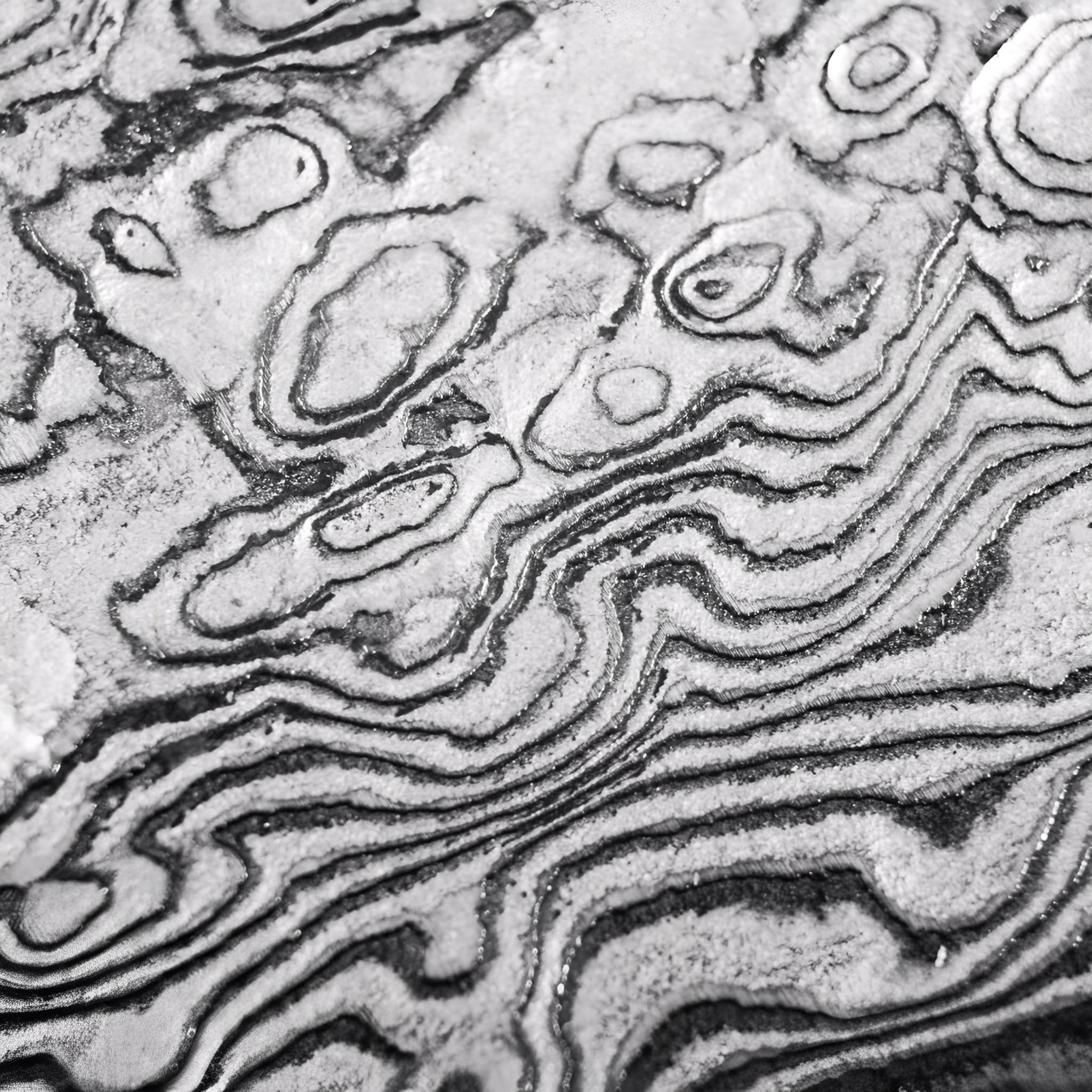
Materials Chosen Without Compromise
We select only the highest-grade steels and authentic fittings to ensure every katana is both a masterpiece and a reliable companion.
From the flawless hamon line to the perfectly balanced tang, each detail is carefully inspected to meet the highest standards of performance and aesthetics.
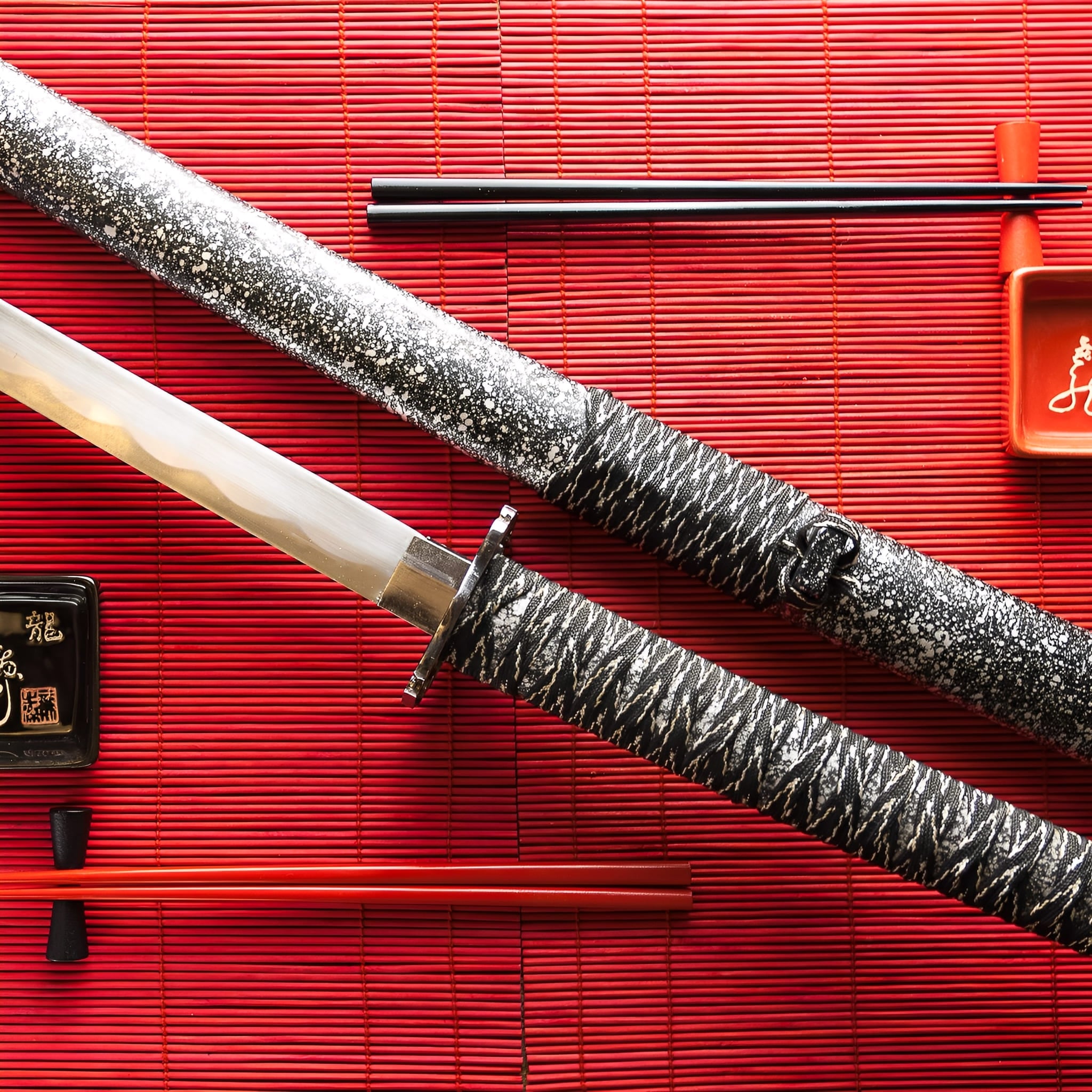
More Than a Sword, A Lifelong Legacy
Owning a handmade katana is an experience that goes beyond the blade itself. It’s holding history, tradition, and craftsmanship in your hands.
Whether displayed as a work of art or wielded with precision, your katana will stand as a symbol of timeless skill and dedication for generations to come.
-
Key Destinations
United States: 5–7 days
Canada: 5–7 days
Australia: 6–9 days
Denmark: 4–6 days
Netherlands: 3–5 days
Sweden: 4–6 days
Switzerland: 3–5 days
Finland: 5–7 days
Singapore: 6–8 days -
Central European Partners
France: 2–3 days
Germany: 3–5 days
Spain: 4–6 days
Italy: 4–6 days
Belgium: 3–5 days
Austria: 4–6 days
Ireland: 4–6 days
Poland: 4–6 days
Portugal: 4–6 days -
Extended EU Network
Czechia: 4–6 days
Hungary: 4–6 days
Slovakia: 4–6 days
Slovenia: 5–7 days
Romania: 5–7 days
Bulgaria: 5–7 days
Croatia: 5–7 days
Serbia: 5–7 days
Estonia: 5–7 days
Latvia: 5–7 days
Lithuania: 5–7 days
Luxembourg: 3–5 days
Greece: 5–8 days -
FAQ’s
Visit our FAQs page to find answers to common questions.